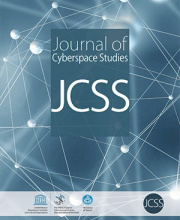۱.
کلید واژه ها:
cyberspace regulation framing assumptions regulatory systems technological risk
Thispaper attempts to connect two rather different fields of study by applying concepts from regulating technological risks to the field of cyberspace regulation. The concept of framing assumption is used in order to show the cyberspace regulation differences in countries particularly between the U.S. and the Euopean system. It shows how the U.S. and Europe have adopted different assumptions regarding the policy problem, the system within which the problem arises and the policy solutions. While the problem for the U.S. regulatory system is technological advancement, the European countries perceived the problem as mitigating hazards. The system for the U.S. is conceived as the competition among profit-seeking companies,whereasEuropean countries are suspicious about those profit-seeking activities. Finally, the solution is lower government intervention for the former, and the latter found the direct involvement of the government as the main solution. An important implication is that there is no unified form of regulation and countries like Iran need to consider their local factors in order to establish their own regulatory systems.
۲.
کلید واژه ها:
Blockchain decentralized human centered design Human-Computer Interaction real world applications
Blockchain technology is a decentralized and open database maintained by a peer-to-peer network, offering a “trustless trust” for untrusted parties. Despite the fact that some researchers consider blockchain as a bubble, blockchain technology has the genuine potential to solve problems across industries. In this article, we provide an overview of the development that Blockchain technology has had in 2018 and point out the challenges of deploying blockchain-based applications in the real world from a Human-Computer Interaction view. We propose that blockchain practitioners should design blockchain applications from users’ perspective, think about who the users are, and what they need. Furthermore, we also lay out possible future trends for blockchain based systems.
۳.
کلید واژه ها:
feminism fourth wave of feminism Internet social media Social Movements social realism
Recent years have witnessed a surge in research on the impact of the cyberspace on social movements. The feminist movement has built a vocal platform online which attempts to underscore sexual violence against women. Scholars have begun to suspect that the internet has ushered in a new wave, the fourth wave of feminism. The fourth wave’s main feature is its reliance on social media. The accessibility, reach of a widespread audience, low costs and user-friendly environment have encouraged women to use social media to speak out against various forms of sexual violence directed against women. It is also assumed that going forward; the movement will also tackle issues such as the gender pay gap, neoliberal policies, maternity leave, and cultural sexism. Moreover, the internet-based movement is striving to bring to the fore the topic of intersectionality, that is, the intersection of oppressive institutions, and the attempt to rectify the failings of past waves by representing those oppressed by multiple institutions such as sexism, classism, and racism. This commentary provides an overview of the emerging academic literature on the fourth wave of feminism and critically reflects the lack of social realism in its existing form of knowledge production.
